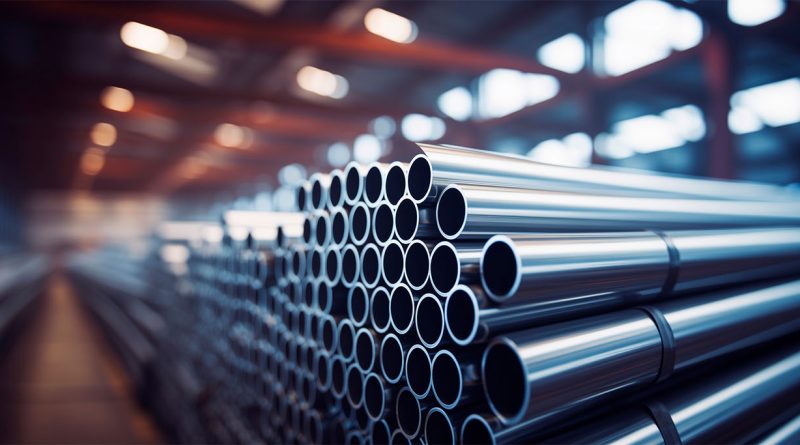Nippon Steel agrees to buy US Steel for $14.9bn
Introduction to the Acquisition
In a historic move that has sent shockwaves through the global steel industry, Nippon Steel, Japan’s steel manufacturing giant, has sealed a deal to purchase US Steel for nearly $15 billion. This acquisition is not just a business transaction; it represents a tectonic shift in the industry, marking the end of an era for one of America’s most iconic industrial enterprises. US Steel, a name synonymous with American industrial prowess, now finds itself under the umbrella of a foreign corporation, signifying a pivotal moment in the global steel landscape.
The deal, which values US Steel at more than double its price before the review began, is a testament to the changing dynamics of the steel industry. Once a titan of American industry, US Steel’s journey to this point has been fraught with challenges, battling against cheaper imports and shifting market demands. In contrast, Nippon Steel, with its expansive global footprint, stands as a beacon of modern steel production’s success and adaptability.
This strategic acquisition is expected to reshape not only the two companies involved but also the broader steel industry. It raises crucial questions about the future of steel production, trade, and the strategic implications of such significant cross-border industrial consolidations.
Historical Context and Current State of US Steel
US Steel, created in 1901 by business legends Andrew Carnegie and JP Morgan, was once the embodiment of American industrial strength. It played a pivotal role in the country’s growth and industrialization, becoming one of the world’s largest corporations in its heyday. However, this legacy has been under siege for decades as the company grappled with the realities of globalization and competition.
The erosion of US Steel’s dominance can be traced back to the influx of cheaper foreign steel and the shifting tides of global trade. These challenges were compounded by strategic missteps and an inability to adapt quickly to changing market demands. The result was a steady decline, a far cry from the company’s former glory.
Despite these struggles, US Steel has remained a significant player in the industry, with a global workforce of over 22,000, including more than 14,000 in the US. Its facilities and technological capabilities, though aging, still hold considerable value. The decision to seek a buyer was a pragmatic step in preserving its legacy and securing a future in an increasingly competitive and globalized market.
The Strategic Intent of Nippon
Nippon Steel’s acquisition of US Steel is a calculated strategic move, aimed at bolstering its position in the global steel market. This deal is about more than just acquiring physical assets; it’s about tapping into the American market, which is ripe with opportunities, especially in the wake of recent government investments in infrastructure and electric vehicles.
Nippon Steel’s intent is clear: to leverage US Steel’s established presence and capabilities to strengthen its own market position. By acquiring US Steel, Nippon not only gains access to a vast American market but also inherits a rich legacy and a skilled workforce. This move is expected to enhance Nippon’s long-term growth prospects and reinforce its status as a global steel powerhouse.
The decision to retain US Steel’s name, brand, and headquarters in Pittsburgh is a strategic one, acknowledging the value of US Steel’s identity and its significance in the American industrial fabric. This approach reflects Nippon Steel’s understanding of the importance of local identity and heritage in the steel industry, a sector deeply intertwined with national pride and economic significance.
Implications for the Steel Industry and Workforce
The acquisition of US Steel by Nippon Steel has profound implications for both the global steel industry and the workforce of the two companies. This deal represents a significant realignment in the industry, with potential ripple effects on market dynamics, trade relations, and competition.
The United Steelworkers union’s reaction to the deal underscores the complexities and sensitivities involved. The union’s apprehension about foreign ownership reflects broader concerns about the future of American manufacturing and the implications for domestic workers. Their stance is a reminder of the delicate balance between global business strategies and local labor interests.
This acquisition raises questions about the future direction of the steel industry, particularly in terms of employment, operational strategies, and market competition. While Nippon Steel has committed to honoring existing contracts with US Steel’s union workers, the long-term impact on the workforce remains a critical area of focus. The union’s influence and its history of shaping policy and trade decisions cannot be underestimated, adding another layer of complexity to this transaction.
Future Prospects and Industry Analysis
The acquisition of US Steel by Nippon Steel marks the beginning of a new chapter in the global steel industry. Industry experts predict that this merger could catalyze a series of strategic realignments and consolidations within the sector, as companies adapt to an increasingly competitive and interconnected market landscape.
The future of the steel industry, post-acquisition, is likely to be characterized by heightened competitiveness, innovation, and a focus on sustainable practices. Nippon Steel’s entry into the US market could spur advancements in steel production technologies and practices, potentially influencing global standards.
Regulatory scrutiny of this deal, especially in terms of its alignment with national security interests and its impact on workers, will be a crucial aspect to monitor. The union’s role in this process, given its historical influence, adds another dimension to the regulatory review.
